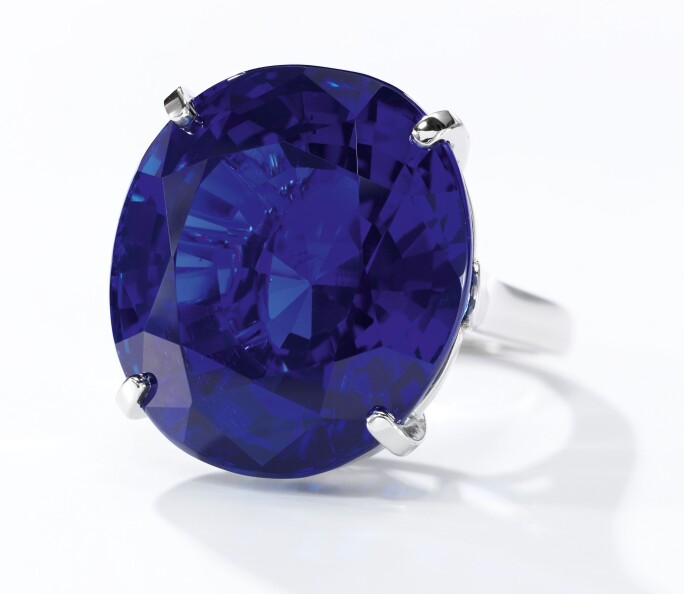A mong the highlights in the upcoming Magnificent Jewels and Noble Jewels sale in Geneva on 15 November are several exquisite Kashmir, Burmese and Ceylon sapphires. These exquisite gems originate from areas known to produce some of the finest sapphires in the world - Kashmir in northern India, across its eastern border to Myanmar (previously Burma) and their island neighbour, Sri Lanka (previously Ceylon).
Sapphires were first discovered in Kashmir in the late 19th century, while Myanmar has been producing sapphires for over 1,000 years. Both types of sapphires possess unsurpassed qualities of rarity, colour and history. But Sri Lanka has perhaps the longest history of sapphires. Once known as Ratna-Dweepa - Gem Island - it was recorded to have these precious stones as far back as the 2nd century and trading history dates back to the 4th century.
Kashmir sapphires have acquired an almost legendary status, due to both their unique colour and texture, and their extreme rarity. Deposits of Kashmir sapphires were first discovered and mined in the early 1880s, following a landslide in a remote valley in the Kashmir region of India. Hearing of these sapphires, brighter than any previously discovered, the Maharaja of Kashmir purchased the mine and work began to uncover these treasures. The mine was active for just five years between 1882 and 1887, when the supply of sapphires was depleted.
A new mine was later opened and periodic mining has been carried out since, but with far less success, meaning that the vast majority of Kashmir sapphires found on the market today were mined during this short period. This limited production has resulted in only a small fraction of the world’s total sapphire supply originating from Kashmir, making them the rarest examples available.
Rarity is only part of the attraction of Kashmir sapphires. They also possess a unique set of characteristics that set them apart, and make them world famous. This includes their almost indescribable colour – perhaps comparable to that of cornflowers, that the stones retain their lustre in any light, and that they exhibit a soft texture that is often compared to velvet.
Myanmar has several important locations that produce sapphires. The most famous is the Mogok Stone Tract which has a rich history of production dating back several hundred years. Current mining is severely limited, making sapphires from Myanmar rare, though more plentiful than those from Kashmir. They also tend to be darker than Kashmir sapphires, described as midnight blue.
Finally, Sri Lanka, known as Ceylon prior to 1972, is the origin of the oldest sapphire mines in the world. According to historical accounts, Ceylon was already known for sapphires by the 2nd century A.D. and there was an active international trade in Ceylon gems by the 4th and 5th century. Its sapphires come in a wide variety of colours and is known for producing the largest stones in the world. Princess Diana’s engagement ring was set with a Ceylon sapphire.
But what exactly is it that makes blue sapphires from Kashmir, Myanmar and Sri Lanka superior to sapphires from any other location? Visually, their colour saturation possesses the highest concentration of blue colour possible, setting them apart from any other blue gem in the world. They are quite simply, are the highest quality of sapphire one can find on earth.





